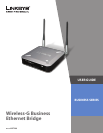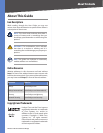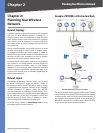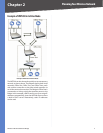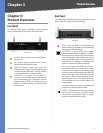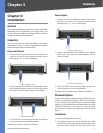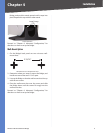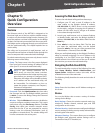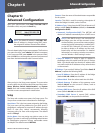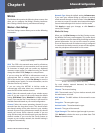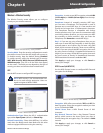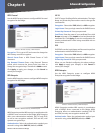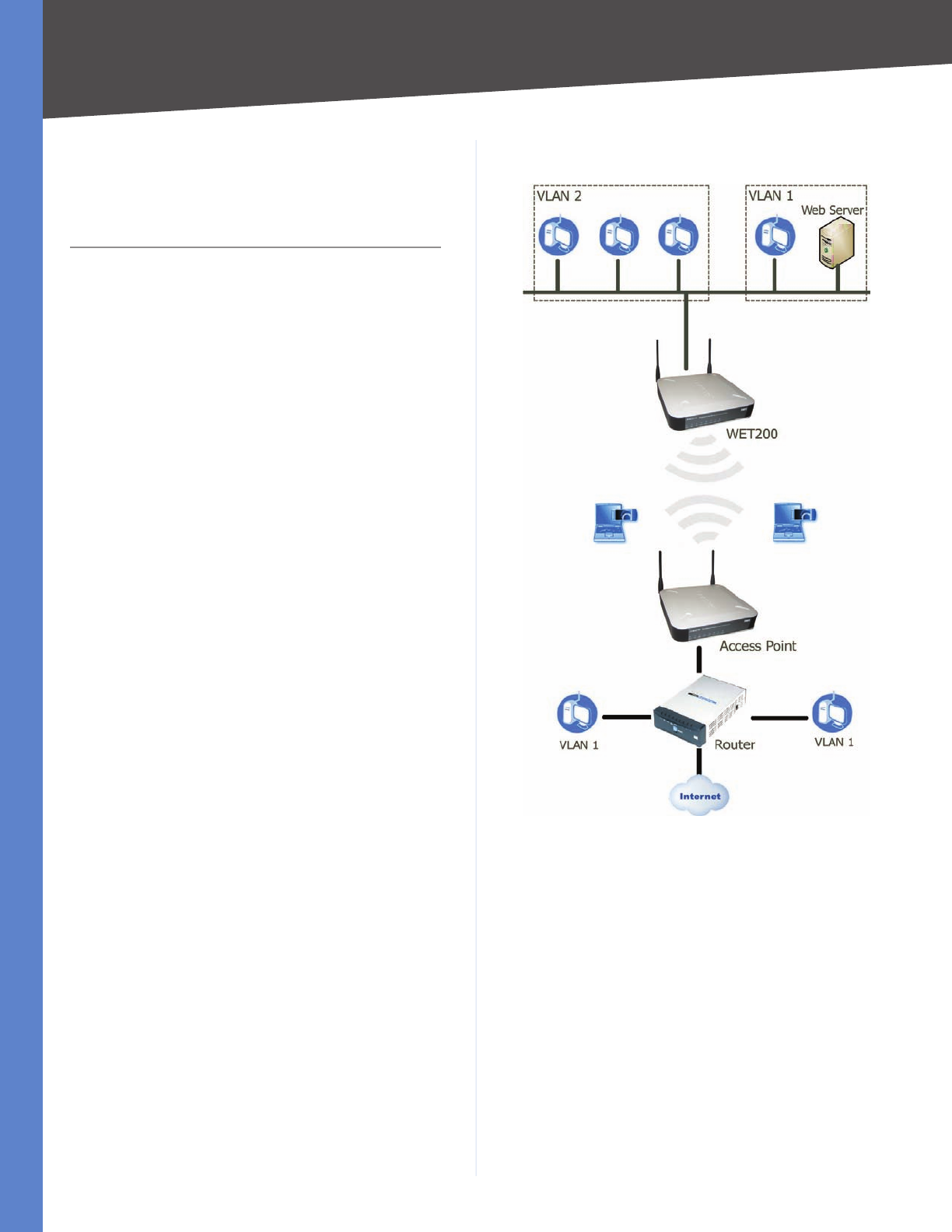
2
Planning Your Wireless Network
Wireless-G Business Ethernet Bridge
Chapter 2
Chapter 2:
Planning Your Wireless
Network
Network Topology
A wireless network is a group of computers, each equipped
with one or more wireless adapters. Computers in a
wireless network must be configured to share the same
radio channel to talk to each other. Several PCs equipped
with wireless cards or adapters can communicate with
each other to form an ad-hoc network without the use of
an access point.
Linksys wireless adapters also provide access to a wired
network when using an access point or wireless router.
An integrated wireless and wired network is called an
infrastructure network. Each wireless PC in an infrastructure
network can talk to any computer in a wired or wireless
network via the access point or wireless router.
An infrastructure configuration extends the accessibility
of a wireless PC to a wired network, and may double the
effective wireless transmission range for two wireless
adapter PCs. Since an access point is able to forward data
within a network, the effective transmission range in an
infrastructure network may be doubled (depending on
antenna characteristics).
Network Layout
The Wireless-G Business Ethernet Bridge can be used
in either Infrastructure mode or Ad-Hoc mode. In
Infrastructure mode, the WET200 can be used to bridge
a separate Ethernet segment wirelessly to the company
network backbone. In Ad-Hoc mode, the WET200
communicates directly with other wireless devices, much
like a wireless client card. The WET200 has been designed
for use with 802.11g and 802.11b products, such as the
WAP200 Wireless-G Access Point, in addition to various
wireless adapters for notebook and desktop PC.
Go to the Linksys website at www.linksys.com for more
information about wireless products.
Example of WET200 in Infrastructure Mode
Example of WET200 in Infrastructure Mode
The above diagram shows a typical infrastructure wireless
network setup where the WET200 is being used to manage
multiple VLANs, with one VLAN connected wirelessly to
the company network and Internet. In this example, the
WET200 is connected to a wireless Access Point, which is
in turn connected to the network backbone.



